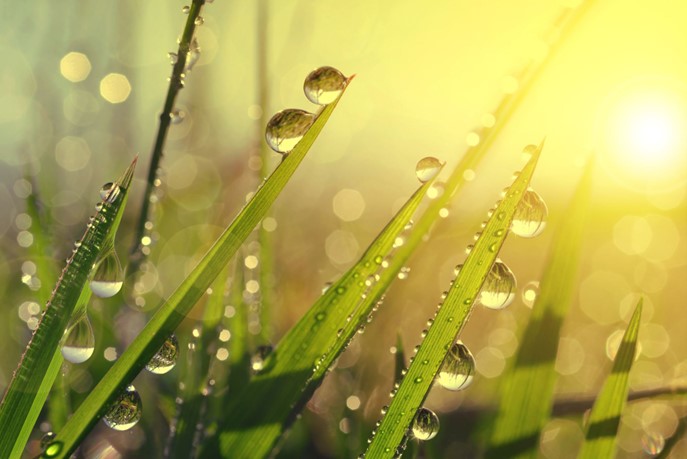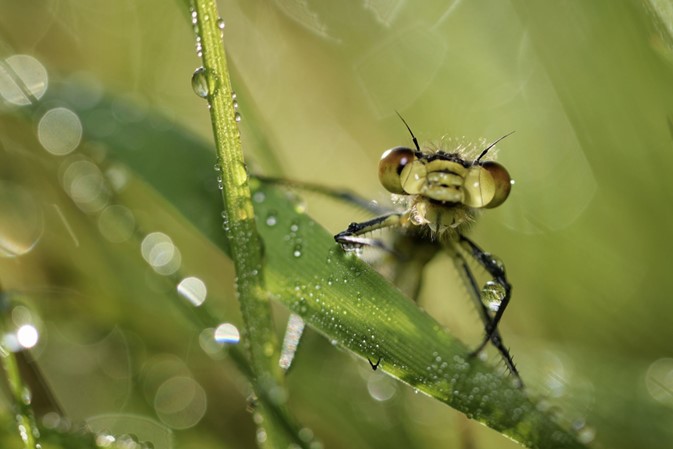In the words of the inimitable Joni Mitchell, “They took all the trees put ’em in a tree museum, And they charged the people a dollar and a half just to see ’em”, it sounds far-fetched, doesn’t it? But in modern society that seems to be the way it’s going for our lawns. Gone are the hazy days of Summer, sitting in the garden listening to the faint sound of a buzzing lawn mower two doors down. Beautiful, lush, green lawns are being ripped up and artificial turf is being laid in its place.
Artificial turf lawns are popular for their hassle-free maintenance and durability, but is this plastic grass really good for our health and our environment?

Artificial turf became popular quite a few decades ago when AstroTurf, an American company, specialised in the sale and supply of artificial grass primarily to the sports sector. It was used in areas where inclement weather conditions would mean clubs were faced with the tasks of growing and maintaining pitches which was costly in time, labour, and finance.
Over time this popularity has increased to include the average Jo incorporating it into his garden. But how safe is artificial grass and does it come at a cost to our environment?
Safety Concerns and Health Risks of Artificial Turf
Various concerns have been raised regarding the safety of artificial turf, specificallyinjuries, heat retention, abrasions, chemical exposure, and environmental impact. So, knowing this, would you want to expose your children or grandchildren to any of these potential safety issues?
We have lawns in our gardens for the whole family to enjoy. The garden is a place of fun and frolicking, water fights with the hose and paddling pools for the kids but artificial turf absorbs heat and as such can become very hot, causing burns, and making it a poor choice for children and pets during the hotter months. Rough and tumble become hazardous when an injury occurs through friction burns.

Britain is a nation of animal lovers, and we treat our pets as part of the family. There is, of course, the one unpleasant aspect of owning pets, that is, you have to clean up after them, but how do you know for certain that the urine and faeces you remove from the artificial lawn have not left any potential hazard behind? Dog, bird, and other droppings do not decompose on artificial turf, so you have to pick them up regularly and ensure every bit of faecal matter has been removed and disposed of, after all, you don’t want your baby or children crawling in or playing on a potentially contaminated surface.
Artificial grass can harbour bacteria if not cleaned and maintained properly, this means potentially using a bleach or disinfectant solution as often as once a week.
Any use of harsh chemicals is going to be bad for the environment but add this to the fact that plastic grass already acts as a barrier to insects and earthworms which perform vital functions in the garden, whilst leaking microplastics into the soil beneath, potentially harming wildlife.
Chemicals such as lead, and zinc have been found in the crumb rubber used as infill material and the toxicity associated with this is an ongoing research topic.
Synthetic grass may be convenient, but it won’t last indefinitely. Initially, it may give instant aesthetic gratification, but it can wear out terribly and is extremely difficult to recycle. Good quality artificial turf is expensive to buy and install and requires constant maintenance.
Manufacturers are understandably trying to reduce any risk associated with safety especially if it involves children and young people’s health by introducing alternative materials and updating guidelines and standards.

Grass in all its natural forms is beautiful, it’s full of insect life which in turn feeds our avian friends. It’s good for human beings to connect to the earth, to feel the grass beneath their feet and crunch their toes into the soil beneath. It keeps us connected to nature and although more study into this needs to be done, it is thought to have many health benefits for those suffering from anxiety disorders and chronic fatigue and pain. Putting a layer of plastic between ourselves and the earth prevents us from achieving this primal connection.
Before you rip out that lush or maybe not so lush, natural lawn, at least consider the effects of replacing it with a plastic alternative. Why risk even a tiny chance your choice could significantly impact the health of your family and pets and upset the biodiversity of our earth?
Get in touch for more information.
References
ROC Documentation: An In-depth Examination of the Safety of Artificial Turf Surfaces. Barbora Okasova (2023)
Natural History Museum https://www.nhm.ac.uk/discover/news/2022/august/artificial-grass-controversy-campaigners-call-taxes-bans.html
New Jersey Work Environment Council: https://njwec.org/PDFs/fact-artificialterf.pdf
Playsmart UK: https://playsmartuk.co.uk/2020/02/24/top-10-problems-with-artificial-grass/
Forge Recycling Blog: https://www.forgerecycling.co.uk/blog/turfing-out-the-untruths-is-artificial-grass-eco-friendly/#:~:text=Plastic%20is%20terrible%20for%20the,and%20puts%20animals%20at%20risk.
Healthline: https://www.healthline.com/health/grounding#benefits
